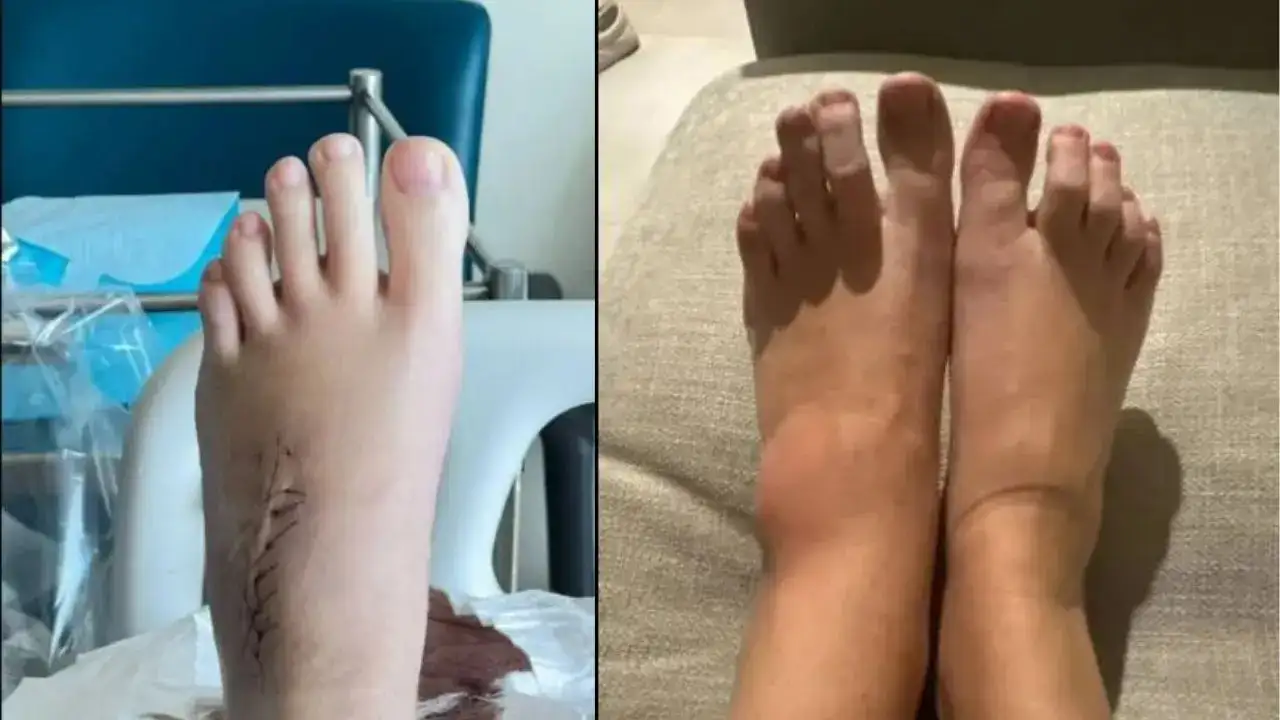
Billie had stepped on a stick while walking barefoot in her garden around five years back, which lodged a splinter in her foot
For years, a 32-year-old woman suffered severe seizures, memory loss, and a host of neurological symptoms—all of which happened due to a splinter lodged in her foot that doctors initially dismissed. "I lost five years of my life because I was told it was anxiety, depression, insomnia, and whatnot," said Billie Bedser.
Billie, a resident of the Gold Coast in Australia, had stepped on a stick while walking barefoot in her garden around five years back. Even though Billie said she was able to remove part of it herself, she still felt something lodged inside. She later went to a doctor who performed an X-ray, which did not pick up wood, and assured her there was nothing left inside. They told her that if something was lodged in her foot, "it would come out naturally."
"I was in pain, I couldn't walk properly, and my foot was swollen, but the doctor didn't take me seriously,” she said.
Later, another doctor misdiagnosed the swelling as a ganglion cyst, which she says she repeatedly insisted it wasn't. However, a little while later, Billie began experiencing symptoms like unexplained weight loss, constant and chronic fatigue, and chronic insomnia, along with memory issues. Despite numerous visits to hospitals and clinics, doctors repeatedly dismissed her symptoms as psychosomatic, blaming anxiety and depression.
Over the next two years, Billie’s condition deteriorated so much that she could no longer work and became bedridden. She lost muscle tone and was experiencing frequent seizures. However, an ultrasound and a CT scan were then able to reveal a 2 cm-long wooden splinter in her foot. The surgeon who operated found that the wood had travelled up into her bone instead of being pushed out.
Billie developed a fungal bone infection
Doctors said the fragment had caused a fungal bone infection, which triggered her neurological symptoms. “I was stunned and furious. I finally had the validation I'd been fighting for. The wood had fungus in it, which led to a bone infection and disrupted my entire nervous system,” she said.
She is now facing a long recovery process, including treatment for nerve damage and systemic inflammation. “I'm still in a lot of pain, and fatigue is constant, but I finally have clarity,” Billie added.
How can a fungal infection cause neurological symptoms?
According to doctors, fungal bone infection, also known as osteomyelitis, can lead to neurological symptoms through various pathways, mostly by causing bone and spinal cord compression or by spreading to the brain and spinal cord. It leads to severe inflammation and tissue damage as well.
Doctors say the infection, when it reaches your spine, causes bone damage and compression of the spinal cord, which thereby causes numbness, weakness, or pain. The infection can also directly spread to the spinal cord, causing inflammation or meningitisor abscess formation, which can compress the spinal cord and affect its function.
What medications are used to treat the infection?
To treat a fungal disease, your provider may prescribe antifungal treatment in the form of oral medication or pills or an IV medication, which is given directly into a vein.
Get Latest News Live on Times Now along with Breaking News and Top Headlines from Health and around the world.
